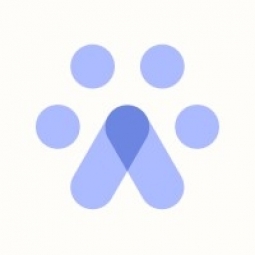Technology Category
- Platform as a Service (PaaS) - Application Development Platforms
Applicable Industries
- Cement
Applicable Functions
- Procurement
- Sales & Marketing
Use Cases
- Time Sensitive Networking
Services
- Training
About The Customer
Socotra is a rapidly growing start-up that provides agile solutions for insurers. The company is constantly expanding, with 15 to 20+ job openings at all times. The Head of Talent Acquisition, Dubi Ben-Shoham, leads a team that was struggling to keep up with the demands of the company's growth. They were manually sourcing candidates, working on job listings with hiring managers, and conducting interviews. The team also lacked a consistent outreach method and needed time for innovation and process improvement. Since joining Socotra in 2019, Dubi has added four team members and is committed to mentoring and improving processes within the team.
The Challenge
Socotra, a rapidly growing start-up, was facing a significant challenge in its recruitment process. The Head of Talent Acquisition, Dubi Ben-Shoham, found that the demands on his team were becoming unsustainable due to the company's continuous growth. With 15 to 20+ job openings at all times, the team was struggling to manually source candidates, work on job listings with hiring managers, and conduct interviews. They lacked a consistent outreach method, often failing to follow up if a candidate didn't respond to the initial touchpoint. Furthermore, as a platform that provides agile solutions for insurers, Socotra needed time for innovation. Dubi, who had added four team members since joining Socotra in 2019, also needed time to mentor and improve processes within the team.
The Solution
Dubi, always keen on learning about new hiring platforms and building strong relationships with teams, found a solution in Fetcher. The ability to have curated batches of candidates stood out to him during the demo. He also found a strong connection with the Fetcher team, which led to the decision to implement Fetcher in April 2021. Since then, Socotra's talent acquisition team has used Fetcher to source for hard-to-fill roles in engineering, sales, and marketing. Fetcher's sophisticated sourcing capability also allows them to build diversity in their talent pool, without having to invest in separate DE&I resources. Fetcher has enabled Socotra to keep their recruiting budget lean as they no longer need to hire a sourcer or rely on contract recruiters. They also plan to discontinue their LinkedIn Recruiter seats, as Fetcher pulls candidate information from LinkedIn and provides an effective way to send outreach sequences.
Operational Impact
Quantitative Benefit

Case Study missing?
Start adding your own!
Register with your work email and create a new case study profile for your business.
Related Case Studies.

Case Study
System 800xA at Indian Cement Plants
Chettinad Cement recognized that further efficiencies could be achieved in its cement manufacturing process. It looked to investing in comprehensive operational and control technologies to manage and derive productivity and energy efficiency gains from the assets on Line 2, their second plant in India.

Case Study
Digital Transformation of Atlanta Grout & Tile: An IoT Case Study
Atlanta Grout & Tile, a Tile, Stone & Grout restoration company based in Woodstock, Georgia, was facing challenges with its traditional business model. Despite steady growth over the years, the company was falling behind the web revolution and missing out on the opportunity to tap into a new consumer base. They were using independent software from different vendors for each of their department information and workforce management. This resulted in a lot of manual work on excel and the need to export/import data between different systems. This not only increased overhead costs but also slowed down their response to clients. The company also had to prepare numerous reports manually and lacked access to customer trends for effective business decision-making.

Case Study
Revolutionizing Construction Equipment Rental: A Case Study on ProsRent and ENO8
ProsRent, a startup that won the 'Best Financial Opportunity' and 'Best Pitch' at CodeLaunch 2016, aimed to revolutionize the way construction professionals source and rent heavy equipment. In the construction industry, project managers and contractors typically rent heavy equipment from supply companies. However, predicting inventory can be challenging, and finding the required equipment at the right time and place can be a hassle. If the preferred vendor doesn't have the required equipment, it results in wasted time and money in searching for it, often leading to higher costs due to non-preferred rates and increased delivery costs if the vendor is located far from the job site. Suppliers, on the other hand, desired access to a wider base of trusted renters that they didn't have to vet themselves and wanted to offer dynamic rental pricing based on demand and availability in their market. ProsRent's challenge was to produce a minimum viable product that was fast and first to market but also strong enough to engender loyalty and repeat business from the target market.

Case Study
AI-based Automation for Commercial Office HVAC: A Verdigris Case Study
Modern buildings are required to run longer hours, support a variety of end uses, and contribute to higher levels of economic productivity, leaving a thin margin for error. However, even the most advanced building and environmental control systems have failed to adequately support facilities and operations management. Buildings are often inefficient and the people using them are underserved. To meet occupant comfort and maintain cost and energy efficiency, a dynamic, AI-assisted approach is needed.

Case Study
Revamping EE's Legacy ERP: A Case Study on BT's Strategic Transformation
EE, even after its merger with BT, was operating its ERP estate on legacy infrastructure, hosted on the premises of a third-party supplier. This outdated system resulted in a volume-based operational model, higher time to market, longer delivery cycles, and unsatisfactory customer experience. BT recognized the need for a strategic transformation of these aging ERP systems and sought a partner who could proactively manage application services. The partner was also expected to handle development requirements associated with application management services, drive accountability, and ownership with a time and target-driven transformation of these services. BT's primary goals were to improve customer experience, reduce cycle time, and measure these improvements with precision.








